SA Field Cap (black version)
CATEGORY: Version
SKU: 51.GOR.01.02.001.002
Estimated market value:
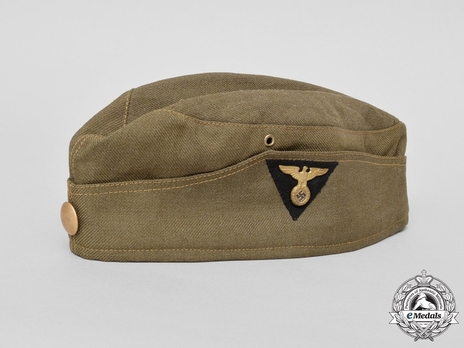
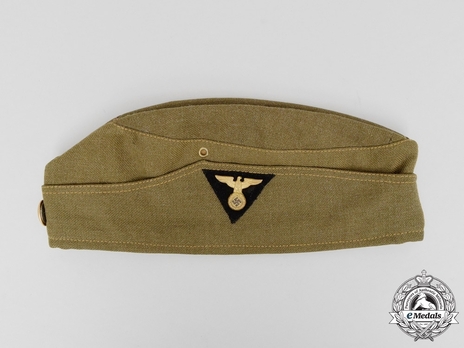
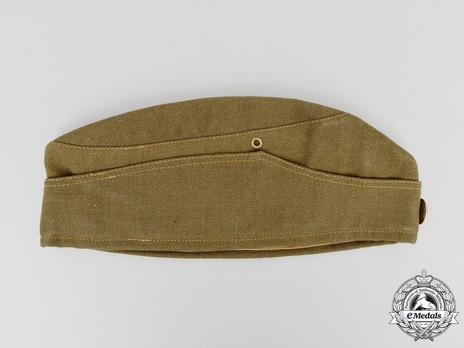
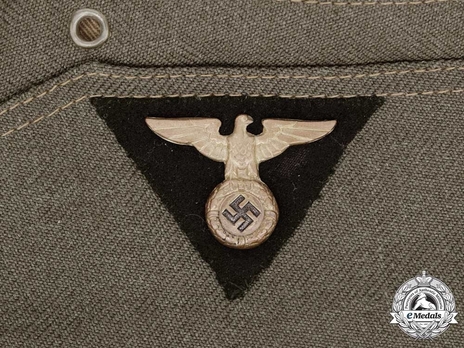
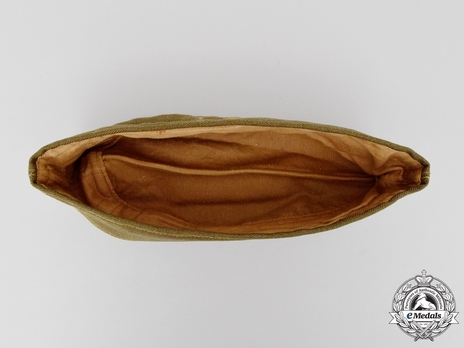
Estimated market value:
Constructed of olive-coloured wool, with fold-down side and back panels with sloping downward scallops towards the front. The front of the cap features a single pebbled large gilt metal (magnetic) button in the center, with an inverted black wool triangle centered on the left side of the cap. The triangle appears hand stitched to the cap using black threading, and features an early political gilt aluminum eagle. Both sides of the cap feature rivets that function as air vents. The interior of the cap is fully lined with a khaki coloured cotton/rayon blended fabric. The cap measures 290 mm x 120 mm, and is well preserved, with only minor signs of gentle wear on the inside of the cap. In overall near mint condition.
The SA (Sturmabteilung, storm detachment) was established in 1921 as a paramilitary protection squad of the NSDAP. The members of the SA were tasked with protecting party leaders at political rallies and meetings from the paramilitary forces of the opposing political factions. The SA was first utilised on November 4, 1921 at a meeting held in Munich’s "Hofbräuhaus" beer hall. The organisation was banned after the failed putsch in 1923 and was reactivated in February 1925.
The Field Cap is also known as the Garrison Cap (Lagermütze) or Overseas Cap (Schiffchen).
Development for an SA field cap began in 1932, but it was only introduced officially in February 1934. It is brown, visorless, and foldable. The field cap was worn by all ranks, mainly during training exercises and marching.
The side flaps are closed by a single button at the front. However, the flaps, though loose, could not actually be turned down. For a short time, a small national eagle emblem was worn above the button, but in late 1934, this was replaced by an eagle emblem on a downward pointing triangle in the colour of the wearer’s region, to be worn on the left side of the cap. At first, the eagle emblem was made of metal, but as of 1937, it was made of silver-grey cloth, machine-woven onto the triangle.
Region colours are as follows:
Pink-red: Ostmark and Südmark
Crimson: Wachstandarte
Dark wine-red: Ostland and Westfalen
Red-brown: Österreich and Donau
Dark brown: Westmark and Niedersachsen
Orange-yellow: Mitte and Südwest
Yellow: Schlesien and Franken
Apple-green: Pommern and Thüringen
Emerald-green: Sachsen and Nordmark
Steel-green: Nordsee and Kurpfalz
Light blue: Hochland and Bayerische Ostmark
Blue-grey: Sudetenland and Weichsel
Cornflower blue: Warthe and Oberrhein
Navy blue: Hansa and Hessen
Black: Niederrhein and Berlin-Brandenburg
Grey: Generalgouvernment
Some caps can be found piped along the crown and flap edge in silver or gold for higher ranks, however, this was never officially permitted.

Comments
Sign in to comment and reply.


Scroll Top